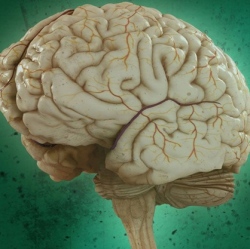
Computers that function like the human brain could soon become a reality thanks to new research using optical fibers made of specialized glass. The research, published in Advanced Optical Materials, has the potential to allow faster and smarter optical computers capable of learning and evolving.
Researchers have demonstrated how neural networks and synapses in the brain can be reproduced, with optical pulses as information carriers, using special fibres made from glasses that are sensitive to light, known as chalcogenides.
Co-author Professor Dan Hewak from the ORC, says: “Since the dawn of the computer age, scientists have sought ways to mimic the behavior of the human brain, replacing neurons and our nervous system with electronic switches and memory. Now instead of electrons, light and optical fibres also show promise in achieving a brain-like computer. The cognitive functionality of central neurons underlies the adaptable nature and information processing capability of our brains.”
n the last decade, neuromorphic computing research has advanced software and electronic hardware that mimic brain functions and signal protocols, aimed at improving the efficiency and adaptability of conventional computers.
However, compared to our biological systems, today’s computers are more than a million times less efficient. Simulating five seconds of brain activity takes 500 seconds and needs 1.4 MW of power, compared to the small number of calories burned by the human brain.
Using conventional fiber drawing techniques, microfibers can be produced from chalcogenide glass based on sulfur that possess a variety of broadband photo-induced effects, which allow the fibers to be switched on and off. This optical switching or light switching light, can be exploited for a variety of next generation computing applications capable of processing vast amounts of data in a much more energy-efficient manner.
Co-author Dr Behrad Gholipour explains: “By going back to biological systems for inspiration and using mass-manufacturable photonic platforms, such as chalcogenide fibers, we can start to improve the speed and efficiency of conventional computing architectures, while introducing adaptability and learning into the next generation of devices.”
